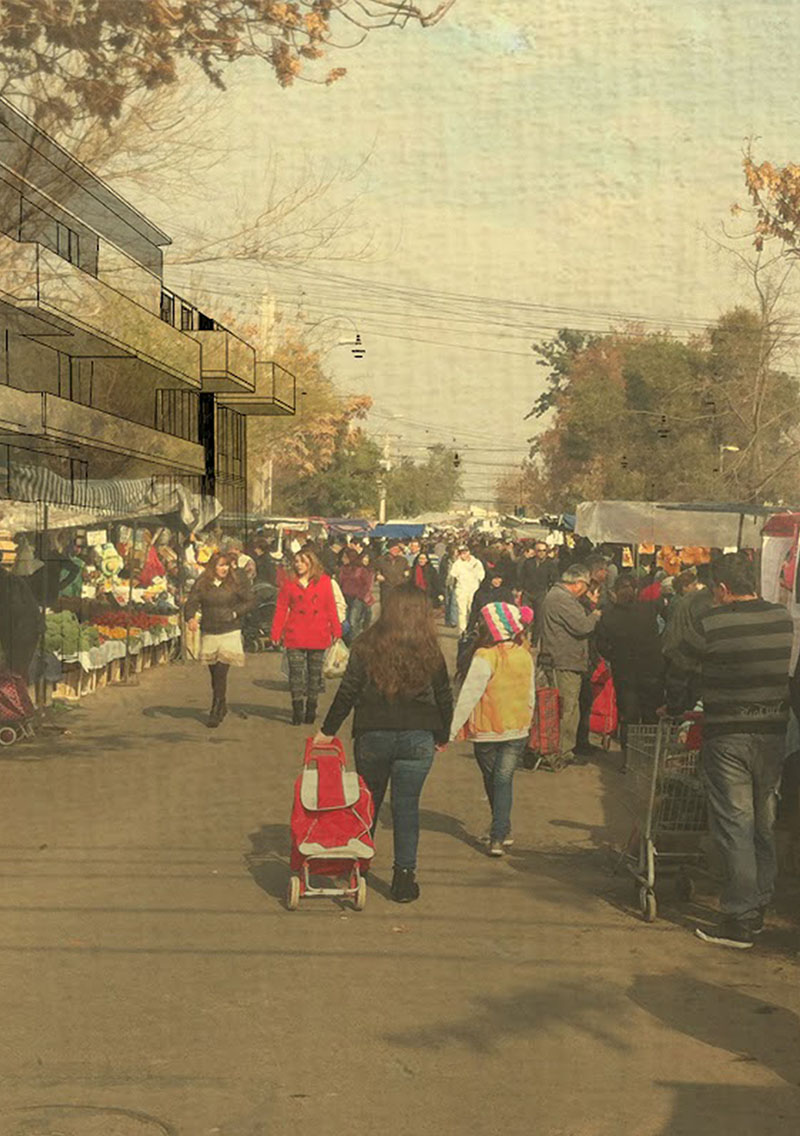Downloads
DOI:
https://doi.org/10.7480/rius.5.3993Abstract
In urban peripheral neighbourhoods, mobility is a right yet to be conquered. The residents have to face marginal conditions either in the ‘macroaccesibility’ that leads to long distances, as well as to the ‘microaccesibilty’ that develops in the proximal space and in daily life time. For this mobility, predominantly female, the most determinant factors are the quality, vitality, and along with it, the safety of the public space. It is precisely there where women have to negotiate their right to appropriate, use and transform the space. And they do it throughout the repetitive practice of walking, often under threat. This brings the challenge of thinking the proximal city with them: diverse, safe and well connected. To do so, the public space is the key.
How to Cite
Published
Issue
Section
License
Copyright (c) 2019 Rosanna Forray

This work is licensed under a Creative Commons Attribution 4.0 International License.
References
Araos, C. (2016). When family lives nearby: kinship, socioeconomic conditions and residential configurations in Santiago, Chile. (Vol. 1).
Ascher, F. (2004). Le sens du mouvement. Modernité et mobilités dans les sociétés urbaines contemporaines. In L. J. Allemand, Sylvain, Ascher, François (Ed.), Le sens du mouvement (p. 336). Paris: Belin.
De Certau, M. (1990) L’invention du qutidien. Paris: Gallimard.
Fenster, T. (2011) The Right to the City and Gendered Everyday Life. En Sugranyez, A. y Mathivet, C: Cities for All. Proposals and Experiences towards the Right to the City. Santiago de Chile: Habitat International Coalition HIC, pp. 45-58.
Figueroa, C., & Forray Claps, R. (2015). Movilidad femenina: los reveses de la utopía socio-espacial en las poblaciones de Santiago de Chile. Revista de Estudios Sociales No.35, 25, 52–67. https://doi.org/10.7440/res54.2015.04
Jirón, P., & Zunino Singh, D. (2017). Dossier. Movilidad Urbana y Género: experiencias latinoamericanas. Revista Transporte y Territorio, 0(16), 1–8. Retrieved from http://revistascientificas.filo.uba.ar/index.php/rtt/article/view/3600/3295
Jouffe, Yves (2011) Countering the Right to the Accessible City: The Perversity of a Consensual Demand. En Sugranyez, A. y Mathivet, C: Cities for All. Proposals and Experiences towards the Right to the City. Santiago de Chile: Habitat International Coalition HIC, pp. 45-58.
Le Breton, Ë. (2005). Bouger pour s’en sortir, mobilité quotidienne et intégration sociale. Paris: Les Canets de l’Info.
Lefebvre, H. (1969) Le droit à la ville. Paris: Anthropos.
Miralles-Guasch, C., & Dones, I. C. de les. (2010). Dones, mobilitat, temps i ciutats. Quaderns de l’Institut (Vol. 14).
Muxi Martínez, Z., Casanovas, R., Ciocoletto, A., & Gutiérrez Valdivia, B. (2011). ¿Qué aporta la perspectiva de género al urbanismo? Feminismos, 17, 105–129.
Ortiz Escalante, S. (2014) Espacio público, género e ( in )seguridad. En Carmen Cortés Zaborras (coord.) Jornadas Urbanismo y Género. Ciudades en Construcción. Perséfone. Ediciones electrónicas de la AEHM/UMA, pp. 48-67. http://www.punt6.org/articulos-y-libros-escritos-por-col%C2%B7lectiu-punt-6/ Visitado: 15 mayo, 2019.
Valdivia, B. (2017) Calles para todas. Revista Ecologista, Nº 93. https://www.ecologistasenaccion.org/35171/ visitado: 15 mayo, 2019.
Vasconcellos Alcántara, E. (2010). Análisis de la movilidad urbana. Espacio, medio ambiente y equidad. Bogotá, Colombia. Bogotá: CAF. https://doi.org/If7432010202974




